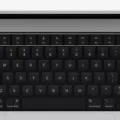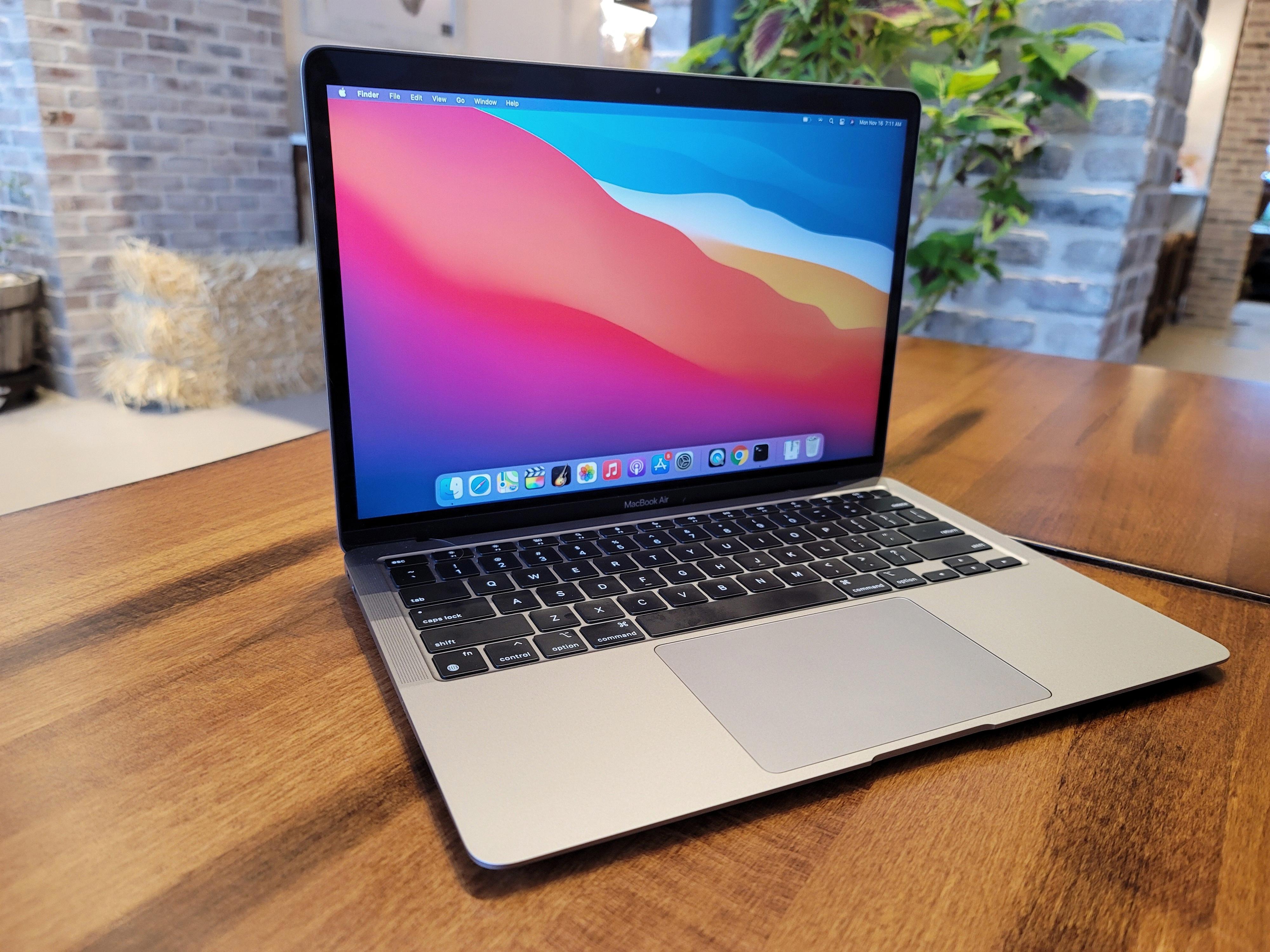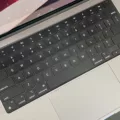The Macbook Pro Keyboard is an integral part of a great user experience. Unfortunately, after prolonged use, the keyboard can get quite dirty and greasy, leading to diminished performance. Luckily, there are some simple steps that you can take to help keep your Macbook Pro Keyboard clean and functioning properly.
First and foremost, it’s important to regularly clean up any dirt and debris that has accumulated on the keyboard. This can be done with a damp cloth or microfiber cloth, followed by a dry cloth to remove any remaining moisture. It’s important not to use too much water in order to avoid damaging the keys or any components beneath them.
If the keyboard has become excessively greasy due to the frequent use of food or drinks near it, then rubbing alcohol is an effective way to break down and remove the grease without damaging the keys or components beneath them. Use a cotton swab dipped in rubbing alcohol (91-99% isopropyl) on individual keys or use compressed air in a left-to-right motion on affected areas of the keyboard. Rotate your laptop 180 degrees and repeat this step for full coverage.
Turning your laptop upside down and shaking it helps dislodge any material that may have fallen beneath the keys. You can also tap each key repeatedly before shaking it over a trashcan; this will help shake out anything stuck between them as well as under them.
Finally, if you want to give your Macbook Pro Keyboard an extra dose of TLC, there are many specialized cleaning products available for keyboards that are specifically designed for Apple devices. These products come in various forms such as wipes, sprays, foams, gels, and more! Cleaning your Macbook Pro Keyboard regularly will help keep it looking sharp while ensuring peak performance from your device – something we all need!
Cleaning Greasy Keys on a MacBook
The best way to clean greasy keys on your MacBook is by using a cotton swab and rubbing alcohol. First, turn off your device and disconnect any power cables. Then, use the cotton swab to carefully dip into the rubbing alcohol. Once the swab is saturated with alcohol, start wiping around the keys and in between them to remove any grease or debris that’s built up over time. Make sure to clean both sides of each key, as well as any metal spacing around them. Once you’re done cleaning, let the alcohol dry completely before powering on your device again.
Cleaning a MacBook Pro Keyboard to Remove Grease
To decrease your MacBook Pro keyboard, start by turning off the device and unplugging it. Next, use a soft cloth dampened with isopropyl alcohol or water to wipe down each key. If there are any sticky areas, you can use a cotton swab dipped in isopropyl alcohol to clean them. Once the surface of the keys has been wiped down, use compressed air to spray the keyboard (or just the affected keys) from left to right. Rotate your Macbook Pro to its right side and repeat the process from left to right. Finally, rotate your Macbook Pro to its left side and repeat this step again. Allow the keyboard to dry before powering on your device.
Cleaning a Greasy Keyboard
Cleaning a greasy keyboard can be done with a few simple steps:
1. First, turn off and unplug the keyboard. Gently use a soft cloth or cotton swab to remove visible dirt and grime.
2. Prepare a cleaning solution of one part rubbing alcohol (91-99% isopropyl) and one part water. Dip a clean cloth into the solution and wring it out until it is damp but not dripping wet. Use this damp cloth to wipe down the keys, being careful not to get any liquid in between them.
3. Use another clean cloth to dry the keys completely, making sure that no liquid seeps in between them.
4. If there are still grease spots on the keys, try using a cotton swab lightly dipped in rubbing alcohol (91-99% isopropyl). Test it on an inconspicuous keycap first to make sure it doesn’t damage the keycap’s finish or printed legend.
5. Finally, let the keyboard air dry for at least 15 minutes before plugging it back in and turning it on again!
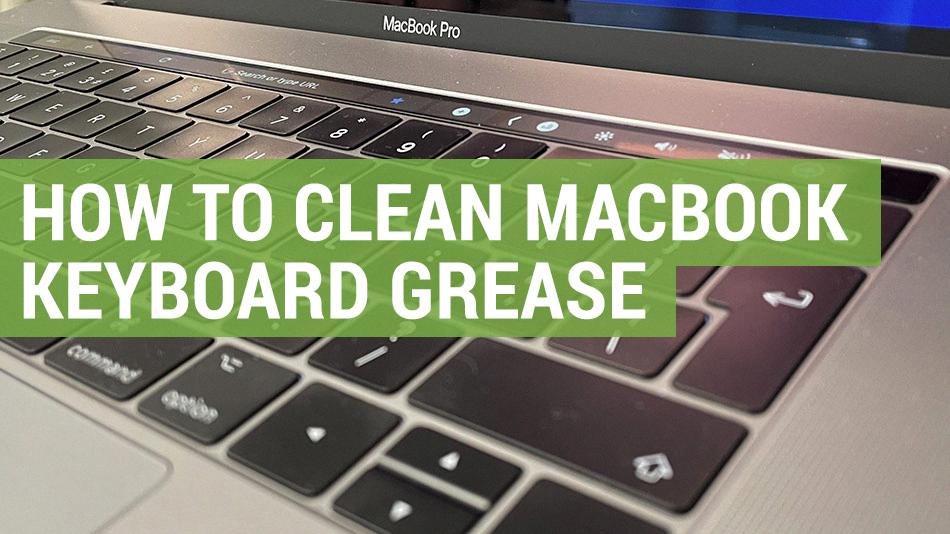
Source: herosupport.co.uk
Cleaning the Dirt Under a MacBook Pro Keyboard
First, turn your laptop upside down and shake it gently to dislodge any dirt, dust, or food crumbs that may have fallen beneath the keyboard. Next, use a soft brush to gently sweep away any debris. You can also use a can of compressed air, held at least 10 inches away from the keyboard to blow away any dirt or dust that is stuck in hard-to-reach places. Finally, if necessary, you can use a damp cloth or cotton swab soaked in rubbing alcohol to remove stubborn particles. Make sure not to get any liquid on the keys or into the laptop itself!
Cleaning a MacBook Keyboard with Rubbing Alcohol
Yes, you can use rubbing alcohol to clean your MacBook keyboard. However, it is important to exercise caution when doing so. Start by creating a mixture of half rubbing alcohol and half water. Then, use a cloth or cotton swab (not paper towels) dampened with the mixture to wipe off the keyboard. Be sure not to let the liquid reach any ports or components as it could cause damage. If necessary, you can also use a soft-bristled toothbrush to get between the keys and remove any dirt or grime that might be stuck there. After cleaning, make sure all of the liquid has been wiped off and no residue remains before turning your laptop back on.
Cleaning a Sticky MacBook Keyboard
Yes, you can clean a sticky MacBook keyboard. Start by turning off your laptop and unplugging it from the power source. Use a cotton swab dipped in rubbing alcohol to wipe the area underneath each keycap. Make sure the cotton swab isn’t dripping liquid and clean the surface a few times with fresh cotton swabs to avoid having to repeat the process later. Allow the keyboard to dry completely before powering on your laptop.
Cleaning Gunk Under a Keyboard
Cleaning the gunk under your keyboard is easier than you might think! All you need is a small piece of clear tape, about an inch or so. Fold it in half so that the sticky side faces out, and then carefully rub it between your keys. This should pick up any crumbs and dirt that may have gotten stuck under your keys. If there are still some stubborn bits of gunk, you can use a cotton swab dipped in rubbing alcohol to get them out. Once you’re finished cleaning, make sure to remove any residue from the tape and let your keyboard dry before using it again.
Removing Stickiness from a MacBook
Removing stickiness from a MacBook can be done by using Teatree oil. To begin, make sure that the surface is clean and free of dust and debris. Then, take a soft cloth or cotton wool, and soak it in the tea tree oil. Gently wipe the surface of the MacBook with the cloth or cotton wool soaked in tea tree oil. Make sure to avoid scrubbing too hard, as this could damage the finish or scratch the surface of your MacBook. Once you have wiped down the surface with the tea tree oil, use a dry cloth to remove any remaining residue or excess oil from your laptop. With regular use, you should be able to keep your laptop clean and free from stickiness!
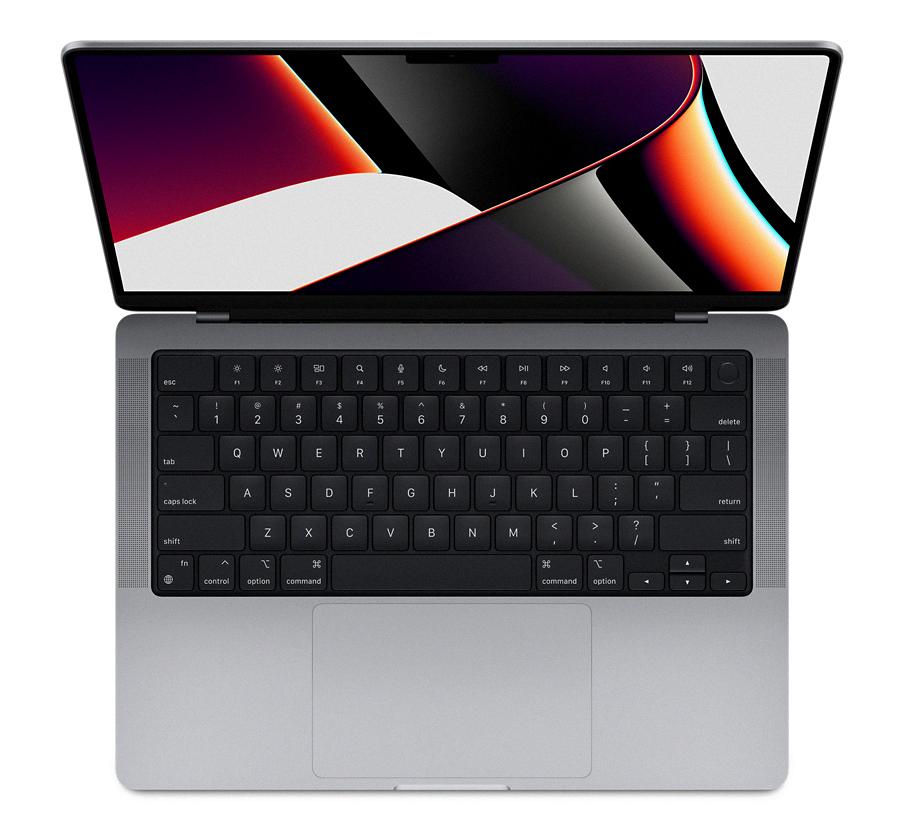
Fixing Greasy Keys on a Laptop
To fix greasy keys on a laptop, you will need to use a diluted solution of isopropyl alcohol. Start by purchasing a pre-diluted bottle of isopropyl alcohol, or dilute it yourself using demineralized water. Aim for a solution with 30% Isopropyl alcohol or less, as anything more can damage the plastic keys on your laptop.
Once you have the solution, apply it to a soft cloth and gently rub the affected keys in a circular motion. This should help to remove any dirt and oils that may have accumulated over time. Once you’ve finished cleaning the keys, make sure to wipe away any remaining moisture with a dry cloth.
If the dirt remains after cleaning, try using another cloth dampened with Isopropyl alcohol and gently scrubbing harder at the affected area. If this still fails to remove the dirt and grease, you may need to replace the key entirely in order to restore its original functionality.
Cleaning a Sticky Keyboard on a Laptop
To clean the sticky keyboard on your laptop, start by turning off the computer and unplugging the keyboard. Then, gently remove any inoperable keys. Next, pour a small amount of isopropyl alcohol or a similar cleaning solution into a container. Using a cotton swab, moisten it with the alcohol and use it to clean the keys and plungers. Afterward, use a dry cloth to wipe away any remaining residue. Finally, reassemble your keyboard and plug it back into your laptop to finish.
Deep Cleaning an Apple Keyboard
To properly deep clean an Apple keyboard, you will need to first turn off the keyboard and remove any loose dirt or debris. Then, use a vacuum with a soft brush attachment to gently vacuum the entire keyboard. To get rid of any lingering dirt and dust, use compressed air to blow out all of the small crevices. If there are any sticky spots or residue on the keys, use a lint-free cloth dampened with warm water to wipe away the residue. Finally, use a 70 percent isopropyl alcohol wipe or Clorox Disinfecting Wipes lightly over the keys and around the edges of the keyboard to sanitize it. Allow your keyboard to dry before plugging it back in and using it again.
Conclusion
In conclusion, the Macbook Pro Keyboard is a great tool for any type of user. It provides a comfortable typing experience with its low-profile keys and backlit design. The keyboard is also dust and water-resistant, making it a reliable choice for home and work use. Its durability has been further improved by the addition of rubberized feet to help keep it in place while typing. The keyboard can be easily cleaned with isopropyl alcohol or compressed air, and any food crumbs or debris should be removed by tapping and shaking the laptop upside down over a trashcan. With all the features and more, the Macbook Pro Keyboard is an excellent choice for any user looking for a reliable yet stylish keyboard for their Macbook Pro device.



